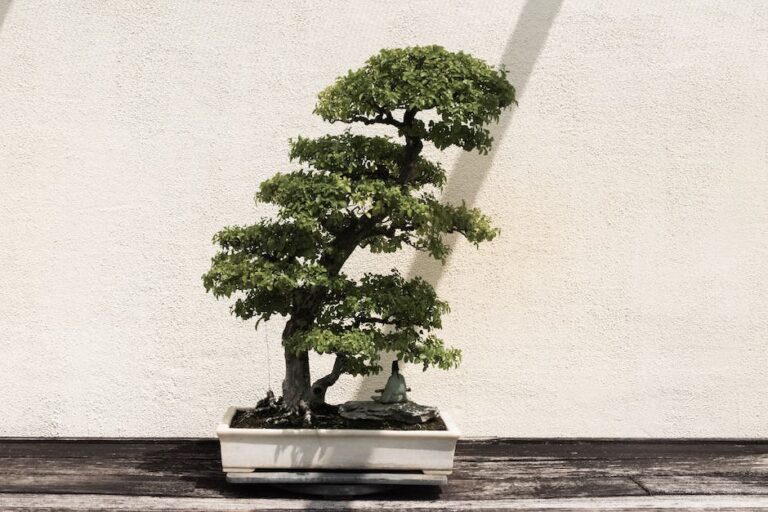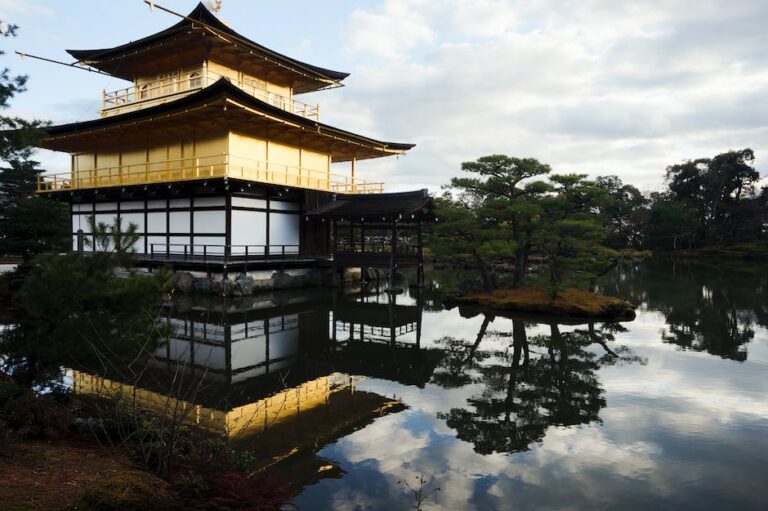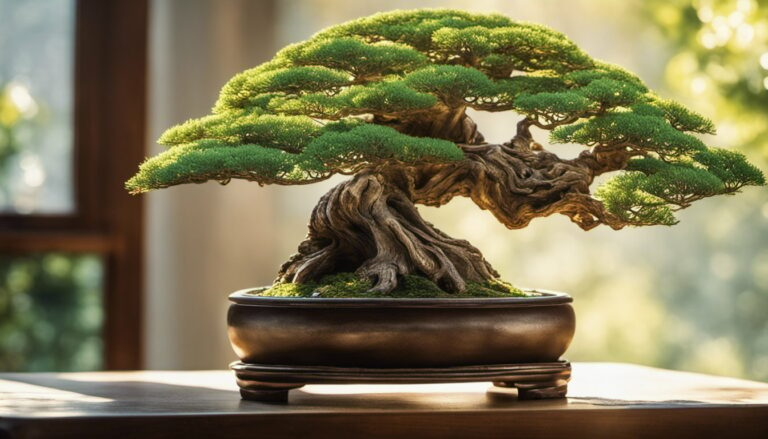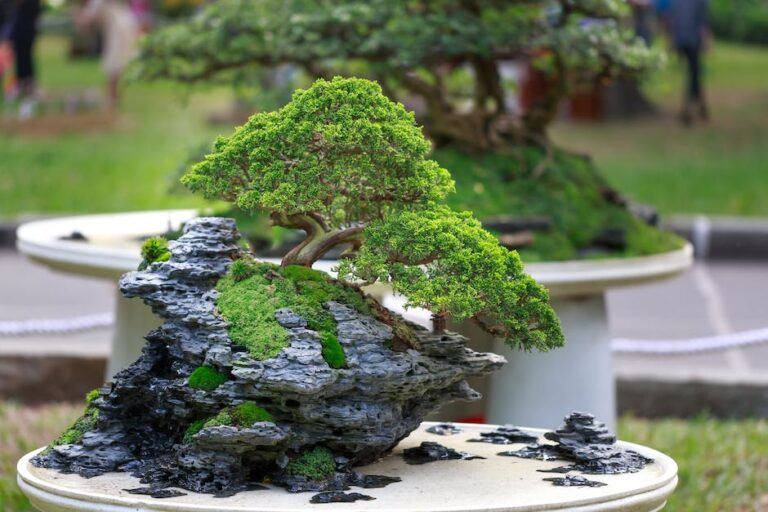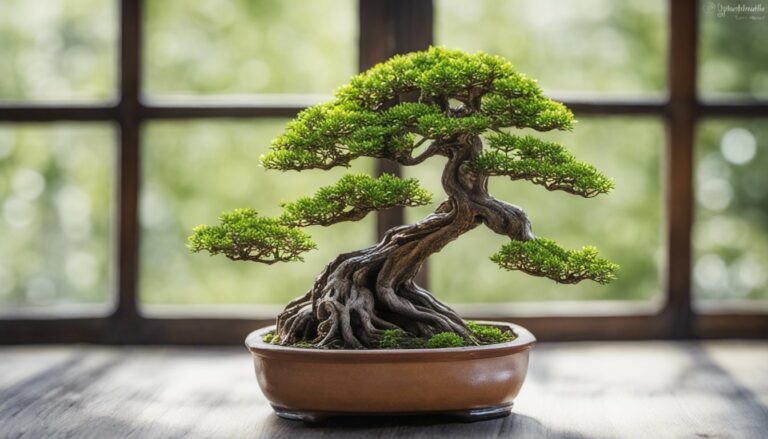Are Bonsai Trees Unethical or Cruel: A Comprehensive Exploration Guide
Some people argue that bonsai trees are unethical because they involve manipulating and restricting the growth of a living organism for the sake of aesthetics. Others argue that the practice is not inherently unethical, but that it can be done in an unethical way if the tree is mistreated or its growth is restricted to the point of causing harm.
Lets answer the question: Are Bonsai Trees Unethical?
No, bonsai trees are not inherently unethical. However, there are ethical concerns about the practice if the tree is mistreated or its growth is restricted to the point of causing harm.
In this article, we will take a closer look at the ethics of bonsai and explore both sides of the debate.
What is the Ethical Dilemma with Bonsai Trees?
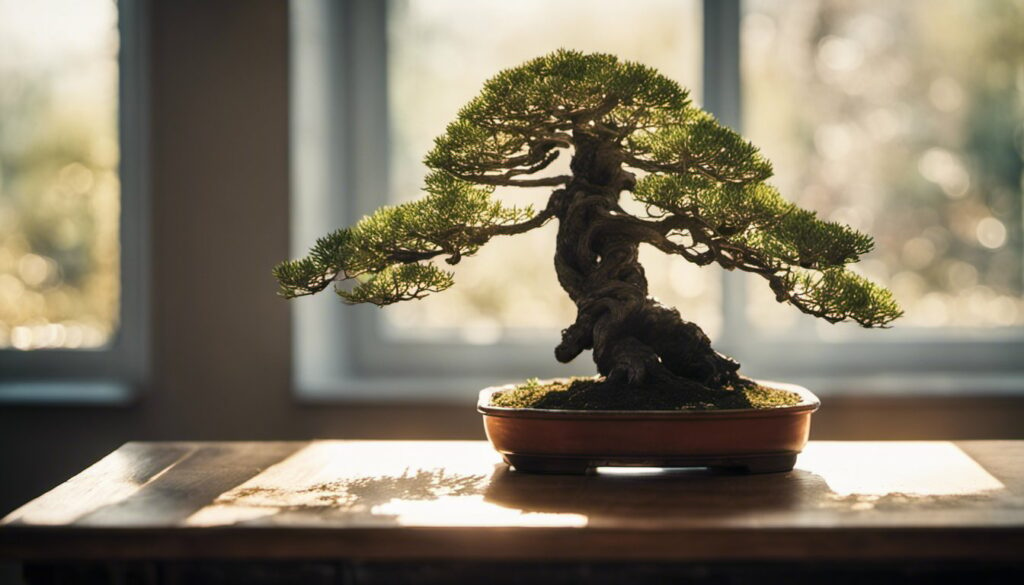
I’ve often pondered the ethical dilemma with these miniature trees. While bonsai are a beautiful art form that can be grown for decades, there is a debate around restricting a living plant’s natural growth and shape.
Bonsai trees require careful pruning and wiring of branches to maintain their small, sculpted forms. This means manipulating the tree’s growth and preventing it from reaching its full size. For some, this amounts to controlling nature for aesthetics. However, bonsai also live much longer than they would in the wild, with some trees hundreds of years old.
As long as their pots provide good drainage, soil, and nutrition, their confined root systems stay healthy. Their small pots are replaced with larger ones as the trees grow to continue challenging them in a natural way. Bonsai are not meant to depict mature forest trees but to reflect the passage of time in a condensed form.
How to Cultivate Bonsai Responsibly
One of the most important rules I have and always thinks about when I cultivate any tree is that I want to respect the three and it´s natural form.
- Pruning with Purpose: Employ mindful pruning techniques, ensuring each cut contributes to the tree’s health and aesthetics.
- Thoughtful Wiring: Utilize wiring judiciously, respecting the natural flow of branches while achieving the desired shape.
- Adequate Pot Space: Choose pots that provide ample space for root development, promoting the long-term health and stability of your bonsai.
- Balanced Watering Practices: Understand your bonsai’s water needs and establish a balanced watering routine to prevent under- or overhydration.
- Ethical Soil Choices: Opt for well-draining, nutrient-rich soil, promoting the optimal growth and health of your miniature tree.
- Mindful Environmental Impact: Be conscious of the resources used, from soil to water, and explore sustainable alternatives to reduce environmental impact.
- Species Selection: Choose bonsai tree species that align with your local climate, reducing the need for excessive manipulation and ensuring a harmonious coexistence with nature.
Bonsai Trees vs. Natural Growth
Here’s an explanation of the key differences between bonsai trees and natural tree growth:
Root Growth: In nature, tree roots are able to spread widely underground to absorb water and nutrients. Bonsai roots are contained within a small pot, limiting their growth.
Trunk/Branch Growth: Naturally, trees grow taller each year, developing thick trunks and canopies of branches and leaves appropriate for their species and environment. Bonsai growth is restricted through pruning and training techniques to remain small and balanced.
Aging Process: In nature, trees age gradually over decades or centuries as their trunks thicken and bark develops character. Bonsai aging is accelerated through techniques like root pruning that stress the tree, causing bark and trunk changes associated with maturity.
Environmental Factors: Trees adapt according to local conditions like climate, soil quality, sunlight exposure, etc. Bonsai are protected from extremes and placed in optimal settings for their health and to enhance natural growth patterns.
Form: Natural trees develop freely without shaping. Bonsai are sculpted through pruning, wiring, and defoliation to depict mature trees in miniature with stylized trunks and branch structures.
Common Ethical Problems in Bonsai Practices
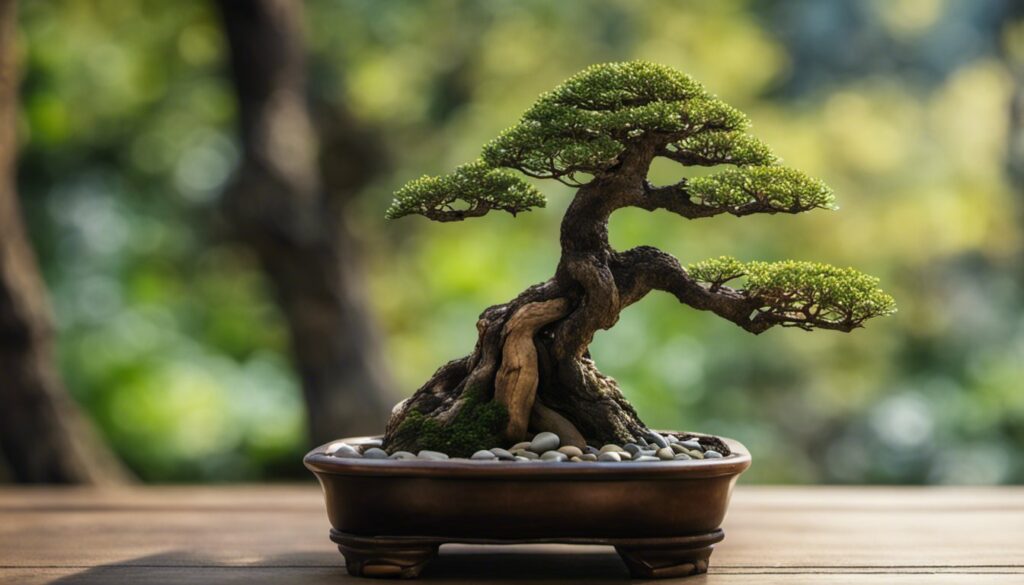
Here are some of the most common ethical problems that can arise in bonsai practices:
- Over-pruning or restricting growth – Aggressive pruning or wiring that severely limits a tree’s natural growth pattern could be considered inhumane by some.
- Using plants not suited for bonsai – Trying to bonsai plants that do not respond well to training, like tropical species in colder climates, may cause undue stress.
- Improper pot size – Keeping a tree long-term in a pot that is too small for its root system can inhibit health.
- Neglecting care needs – Bonsai require regular watering, feeding, pruning, etc. to stay healthy. Ignoring these needs amounts to neglect.
- Displaying collected plants – Removing plants from the wild can damage natural environments and populations. Cultivated stock is more ethical.
- Lack of disease/pest prevention – Pests and diseases may spread more easily in bonsai. Proper quarantine and treatment of affected plants is important.
- Displaying bonsai in stressful conditions – Exhibiting bonsai in very hot, cold, or dry conditions that stress the trees raises welfare concerns.
- Prioritizing aesthetics over health – Some styles like root-over-rock cause physical stress. Health should never be compromised for the sake of artistic design.
With the right knowledge and care, bonsai can be practiced sustainably and without compromising a plant’s well-being. But these issues, if ignored, could represent unethical treatment.
The Creative Aspect of Bonsai Artistry
Through the years of pruning, wiring, and guiding its growth, I watch as my vision slowly emerges. It’s amazing how a few strategic branches placed just so can transform a plain little plant into a miniature masterpiece.
I love experimenting with different classical bonsai styles like formal upright or slanted, and accentuating the trees’ natural characteristics within those forms. Every subtle movement of a branch during styling is a creative act.
Repotting my bonsai into just the right pot is like finishing a painting’s frame. I consider balance, placement and all the small details that bring the composition together as a cohesive work of art.
My bonsai are living canvasses that I can continue refining for decades. Being able to express my artistic eye through cultivating natural, miniature trees is extremely rewarding. It’s a blend of nature, patience and creativity that few other mediums can match.
Where Does the Line Between Ethical and Unethical Lie
Determining the line between ethical and unethical bonsai practices is a nuanced endeavor, influenced by various factors.
- Respect for Nature: Ethical bonsai practices respect the inherent nature of the tree, allowing it to express its unique beauty without excessive manipulation. Unethical practices may involve aggressive pruning or wiring that compromises the tree’s natural form.
- Health and Well-being: A crucial factor is the well-being of the bonsai. Ethical cultivation prioritizes the tree’s health, ensuring proper nutrition, hydration, and appropriate pruning. Unethical practices may prioritize aesthetics over the tree’s vitality, leading to long-term harm.
- Environmental Impact: Responsible bonsai care considers the environmental impact of cultivation, using sustainable resources and minimizing waste. Unethical practices might involve the indiscriminate use of resources or harmful substances, contributing to environmental degradation.
- Balanced Pruning and Wiring: Ethical bonsai strikes a balance in pruning and wiring, enhancing the tree’s beauty while maintaining its natural vitality. Unethical practices may involve excessive pruning or wiring, causing stress and potential harm to the tree.
- Species Appropriateness: Choosing a bonsai species suited to the local climate reflects ethical consideration. Unethical practices may involve cultivating species ill-suited to the environment, leading to ongoing struggles for the tree.
- Educated Decision-Making: Ethical bonsai practitioners make informed decisions, considering the long-term impact of their actions. Unethical practices may arise from a lack of awareness or an undue focus on immediate aesthetics without regard for the tree’s future.
Are Bonsai Trees Worth the Ethical Concerns?
The debate over the ethics of bonsai trees involves valid points on both sides. Bonsai, as living art, brings joy to many, thriving when well-cared for and even outliving their wild counterparts. Natural styles address growth concerns, yet some argue any manipulation is ethically questionable. Environmental impact is also debated, but sustainable cultivation can be ethical.
Experts generally agree that ethical bonsai, with proper care, supports tree health (source: Bonsai Societies of Britain). Still, ongoing dialogue about our connection with nature in this context is essential. For bonsai enthusiasts, responsible practices ensure these living art pieces flourish culturally and ethically.
Pros and Cons of Bonsai Cultivation
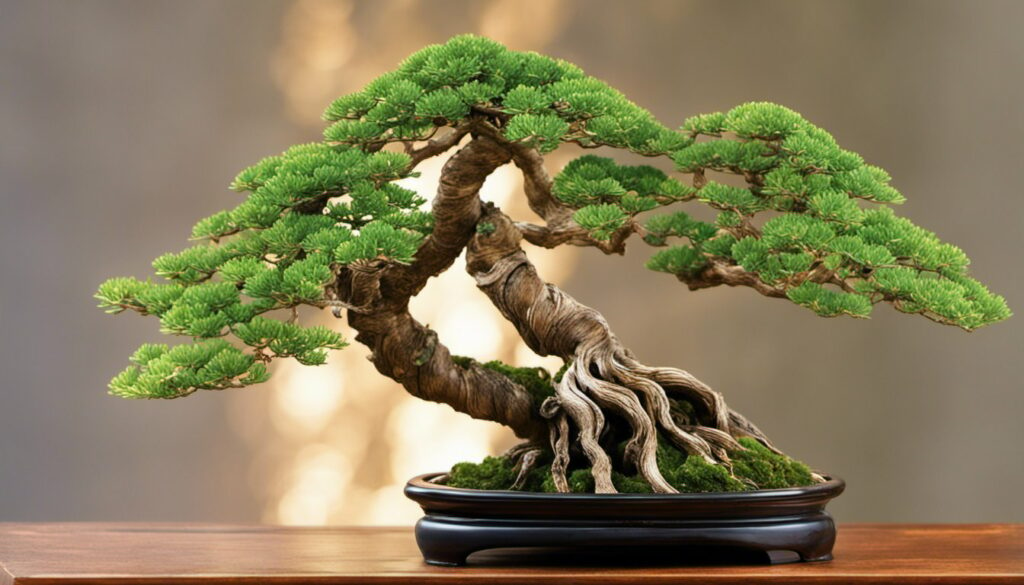
There are some pros and cons that you should know about with no particular rank.
Pros:
- Bonsai have an aesthetic appeal and are a form of living art.
- They can live for decades with proper care, becoming heirlooms.
- Their small size allows them to be enjoyed indoors or outdoors all year.
Cons:
- Restricting a tree’s natural growth through pruning and wiring raises ethical issues for some.
- Bonsai require regular maintenance like watering, fertilizing, and pruning to thrive in small pots.
- Pests and diseases could more easily impact their health in confined spaces.
Different Types of Bonsai and Their Ethical Implications
It is really important to know the different styles of bonsai, from formal upright to cascade, each carry their unique ethical implications:
- Formal Upright: This classic style, resembling a small tree in the wild, often involves minimal manipulation, posing fewer ethical concerns.
- Cascade: The cascading branches evoke a sense of natural growth, yet careful pruning raises questions about the impact on the tree’s health.
- Broom Style: Symmetrically structured, this style showcases meticulous pruning but may present ethical challenges regarding the tree’s natural form.
- Informal Upright: Mimicking a tree shaped by natural elements, this style involves less drastic pruning, aligning with a more ethical approach.
Alternatives to Traditional Bonsai Cultivation
If you’ve ever wondered about the ethical side of cultivating bonsai trees and sought alternatives to traditional methods, you’re in for a treat. Let’s explore how we can grow these miniature wonders with a mindful touch and respect for nature’s balance.
- Mimicking Natural Growth: Embrace techniques that replicate the organic growth patterns of trees, allowing them to flourish authentically.
- Larger Pots for Healthier Roots: Provide more space for your bonsai’s roots to grow, promoting overall health and stability.
- Choosing Native Species: Opt for bonsai trees that are native to your region, aligning with the natural environment and reducing the need for excessive manipulation.
- Mindful Watering Practices: Instead of rigid schedules, pay attention to your bonsai’s water needs, respecting its individual requirements.
- Balanced Pruning: Practice gentle and balanced pruning to maintain the aesthetics without compromising the tree’s natural form.
Conclusion
I really belive that if you threat everything and everyone with care and approach most situations with some kind of mature and healthy view there will never be a problem if things are ethical or unethical. Live your life celebrating life and give as much back as you can and I think we have a winning concept.
The bottom line? If we approach bonsai with care, knowledge, and a touch of maturity, the beauty of these miniature trees can flourish ethically. It’s about celebrating life, giving back, and finding a winning concept. So, as you dive into bonsai, remember: thoughtful practices make these tiny wonders not just artful, but ethically harmonious.


